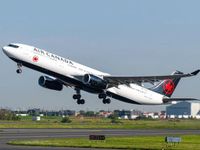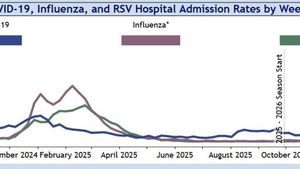More than 10,000 Air Canada flight attendants began voting this week on a new contract that could reshape the economics of the airline industry in Canada—and perhaps beyond. The vote, which started Wednesday, August 27, 2025, and runs through September 6, follows a tumultuous period for the country’s flagship carrier. Just days earlier, Air Canada’s operations ground to a halt as flight attendants, represented by the Canadian Union of Public Employees (CUPE), staged a dramatic strike after contract talks broke down on August 16.
The strike, which saw hundreds of planes grounded and thousands of travelers stranded, ended abruptly on August 19 when a tentative deal was announced. Yet, as Air Canada began the slow process of restoring full service—a process expected to take up to ten days—the real work was only beginning. The new contract, now up for a vote, doesn’t just offer pay raises; it introduces a significant change in how flight attendants are compensated for their time on the ground, a longstanding point of contention in the industry.
According to reporting from National Post and CP24, the new agreement would see most junior flight attendants receive a 12% salary increase this year, while more senior members would get an 8% bump. The raises don’t stop there: all members are slated for a 3% increase on April 1, 2026, followed by a 2.5% hike in 2027 and 2.75% more in 2028. But it’s the issue of ground pay—a flashpoint in negotiations—that has drawn the most attention.
Historically, flight attendants have only been paid for time spent in the air, despite performing critical safety checks and assisting passengers before takeoff and after landing. The new deal changes that. Under its terms, attendants will earn 50% of their hourly wage for 60 minutes of ground time on narrow-body aircraft and for 70 minutes on wide-body planes. These rates will rise incrementally: to 60% next April, 65% in 2027, and finally 70% in 2028.
This move is more than just a win for Air Canada’s flight attendants—it could set a new standard for the entire airline industry. As Simply Wall St points out, ground pay has traditionally been an industry blind spot. Delta Air Lines in the United States was the first to break with tradition in 2022, paying its non-unionized flight attendants half their hourly rate for boarding time. American Airlines followed suit after negotiations with its union. Now, with Air Canada’s new contract, the trend is gaining momentum north of the border. WestJet, another major Canadian carrier, faces contract negotiations at the end of the year, and ground pay is expected to be a prominent issue.
But the deal is not without controversy. Several outlets, including Reuters and CP24, have reported that some Air Canada flight attendants are dissatisfied with the offer and plan to vote against it, arguing that the raises and ground pay provisions don’t go far enough. The union has acknowledged these concerns, but voting is limited to the pay portion of the agreement. Other aspects—such as changes to health and pension benefits and vacation time—are already set in stone. If attendants reject the pay hikes, the matter will proceed to third-party arbitration, but the rest of the contract will remain in effect.
There’s another wrinkle: the legality of further strike action. The Canadian government declared the brief August strike illegal after attendants initially refused a back-to-work order. Any new strike would also be deemed illegal, but it’s worth noting that the previous order was ignored until a deal was reached. Still, with the current vote focusing only on pay, industry watchers say another strike is unlikely.
The new agreement, if ratified, will remain in force until March 31, 2029. This long-term stability is meant to provide both sides with predictability after a period of high drama and public disruption. Yet for Air Canada’s management and investors, the contract’s implications go far beyond labor peace. As Simply Wall St analyzes, the introduction of ground pay and higher wages could have a profound effect on Air Canada’s cost structure and future earnings.
Already, the airline has suspended its third quarter and full-year 2025 financial guidance due to the labor disruption, highlighting just how quickly operational stability can evaporate when labor relations sour. Air Canada now projects CA$26.3 billion in revenue and CA$877.4 million in earnings by 2028, assuming an annual revenue growth rate of 5.6%. However, that earnings figure represents a decline of about CA$622.6 million from the current CA$1.5 billion, reflecting the anticipated impact of rising labor costs.
Market analysts are split on what all this means for Air Canada’s future. According to Simply Wall St, fair value estimates for the company’s shares vary widely, ranging from CA$15.51 to CA$173.60 per share. Such disparities underscore the uncertainty surrounding the airline’s outlook as it navigates new cost pressures, volatile labor relations, and a rapidly recovering travel market.
For investors and industry observers, the Air Canada saga is a case study in the delicate balance between operational stability and labor costs. The recent strike and its resolution laid bare just how much is at stake—not just for flight attendants seeking fair compensation, but for airlines whose profitability can turn on the outcome of a single contract negotiation.
As the voting continues, the airline industry watches closely. The outcome could set a precedent for future negotiations across North America, especially as employees at other carriers look to Air Canada’s deal as a benchmark. Meanwhile, travelers and shareholders alike are left to wonder: will the new contract bring lasting peace and stability, or is it just the opening act in a new era of labor activism and rising costs?
The results of the vote are expected within a day after the polls close on September 6. Until then, Air Canada’s fate—and perhaps the shape of airline labor relations in Canada—hangs in the balance, with thousands of workers and millions of passengers waiting to see what comes next.
Whatever the outcome, one thing is certain: the days when flight attendants worked unpaid on the ground may soon be numbered, and the ripple effects could be felt well beyond the gates of Canadian airports.





